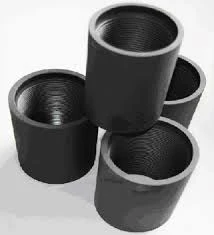- Afrikaans
- Albanian
- Amharic
- Arabic
- Armenian
- Azerbaijani
- Basque
- Belarusian
- Bengali
- Bosnian
- Bulgarian
- Catalan
- Cebuano
- Corsican
- Croatian
- Czech
- Danish
- Dutch
- English
- Esperanto
- Estonian
- Finnish
- French
- Frisian
- Galician
- Georgian
- German
- Greek
- Gujarati
- Haitian Creole
- hausa
- hawaiian
- Hebrew
- Hindi
- Miao
- Hungarian
- Icelandic
- igbo
- Indonesian
- irish
- Italian
- Japanese
- Javanese
- Kannada
- kazakh
- Khmer
- Rwandese
- Korean
- Kurdish
- Kyrgyz
- Lao
- Latin
- Latvian
- Lithuanian
- Luxembourgish
- Macedonian
- Malgashi
- Malay
- Malayalam
- Maltese
- Maori
- Marathi
- Mongolian
- Myanmar
- Nepali
- Norwegian
- Norwegian
- Occitan
- Pashto
- Persian
- Polish
- Portuguese
- Punjabi
- Romanian
- Russian
- Samoan
- Scottish Gaelic
- Serbian
- Sesotho
- Shona
- Sindhi
- Sinhala
- Slovak
- Slovenian
- Somali
- Spanish
- Sundanese
- Swahili
- Swedish
- Tagalog
- Tajik
- Tamil
- Tatar
- Telugu
- Thai
- Turkish
- Turkmen
- Ukrainian
- Urdu
- Uighur
- Uzbek
- Vietnamese
- Welsh
- Bantu
- Yiddish
- Yoruba
- Zulu
Understanding the Distinctions Between Casing and Tubing in Oil and Gas Production
Understanding the Difference Between Casing and Tubing in Oil and Gas Drilling
In the oil and gas industry, the terms casing and tubing are often used interchangeably, but they actually describe two distinct components of oil wells, each serving critical functions in the drilling process. Understanding the differences between casing and tubing is essential for anyone involved in the industry, from engineers to investors, and it provides insights into the overall structure and safety of oil extraction.
Casing The Structural Backbone
Casing is a series of pipes that are installed in the drilled wellbore to provide structural integrity and prevent the walls of the borehole from collapsing. Once a well is drilled to the desired depth, casing is inserted into the hole, and cement is pumped between the casing and the borehole wall to secure it in place. This process is crucial for maintaining the stability of the well and protecting groundwater and other natural resources from potential contamination from the extraction process.
There are various types of casing, including surface casing, intermediate casing, and production casing, each designed for specific depths and geologic conditions. Surface casing is the first layer installed and is typically set at a shallower depth to protect surface water resources. Intermediate casing is used for deeper sections of the well, while production casing is installed in the section where oil or gas will be extracted. The choice of casing type, diameter, and material is influenced by factors such as the geology of the formation, pressure and temperature conditions, and the type of hydrocarbon being produced.
Tubing The Delivery System
In contrast, tubing refers to the smaller diameter pipe installed inside the casing. Its primary function is to transport oil and gas from the production zone to the surface. Unlike casing, tubing is not cemented in place and is designed to be easily replaceable. This flexibility allows operators to replace or repair tubing without needing to redo the entire casing operation if issues arise.
what is the difference between casing and tubing?

Tubing is typically made of steel and comes in various sizes and configurations, depending on the well's expected production rates and the characteristics of the hydrocarbons being extracted. The design of the tubing must also account for pressure, temperature, and the corrosive nature of the fluids involved. Some wells may also require multiple strings of tubing to facilitate production, especially in complex reservoirs or high-pressure environments.
Key Differences
The fundamental difference between casing and tubing lies in their purpose and location within the wellbore. Casing is primarily a protective structure that stabilizes the well and protects it from external environmental pressures, while tubing is a conveyance system that enables the efficient flow of hydrocarbons to the surface. Additionally, casing is cemented into place and is not typically removed after installation, whereas tubing can be easily replaced or repaired as needed during the life of the well.
Another important distinction is the type of maintenance required for each component. Casing is usually inspected and monitored for structural integrity, particularly in older wells where corrosion and wear may occur over time. Tubing, on the other hand, may require more frequent maintenance due to wear from the flow of hydrocarbons and other operational factors.
Conclusion
In summary, understanding the differences between casing and tubing is crucial for anyone involved in oil and gas drilling. Casing provides the structural support and protection needed for a safe and effective drilling operation, while tubing serves as the pipeline that delivers hydrocarbons to the surface. Both components play complementary roles in the overall drilling process, and their proper installation and maintenance are essential for the success and safety of oil and gas extraction projects. By appreciating the unique functions and differences of casing and tubing, industry professionals can better navigate the complexities of well design and operation.
-
Tubing Pup Joints: Essential Components for Oil and Gas OperationsNewsJul.10,2025
-
Pup Joints: Essential Components for Reliable Drilling OperationsNewsJul.10,2025
-
Pipe Couplings: Connecting Your World EfficientlyNewsJul.10,2025
-
Mastering Oilfield Operations with Quality Tubing and CasingNewsJul.10,2025
-
High-Quality Casing Couplings for Every NeedNewsJul.10,2025
-
Boost Your Drilling Efficiency with Premium Crossover Tools & Seating NipplesNewsJul.10,2025







